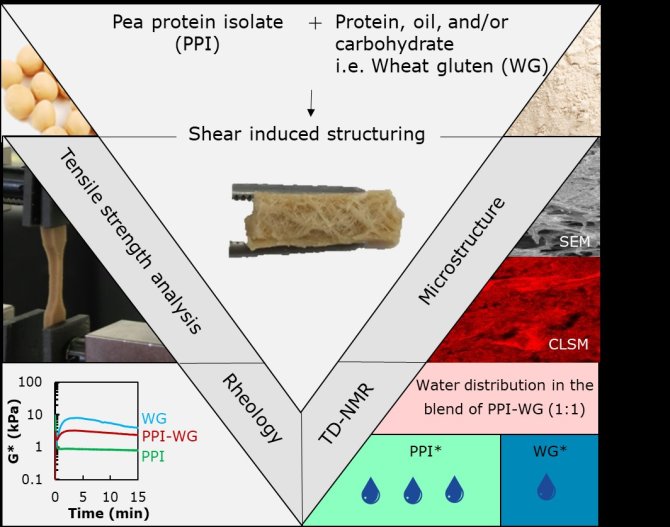
Project
Insights in pea protein as ingredient for meat analogues
Meat analogues, defined as product that mimics the sensorial properties of meat could be an option for consumers to increase their intake of plant protein. Proteins used in these applications are mostly derived from dairy, soy and wheat gluten, due to dietary restrictions, food allergies and vegetarianism, alternative protein sources are being explored. In this project, we use pea protein as raw material for structured based food.
Extrusion is a well-proved method to create a fibrous structure/anisotropy in plant-protein blends. However with extrusion, insights are difficult to achieve due to the occurrence of different physical and chemical effects simultaneously, which makes a translation of the process towards new proteins complicated. The shear cell is used to mimic extrusion-relevant conditions. In this project we will investigate the relation between structure formation for meat analogues using the shear cell and extrusion.
An important property of meat analogues to mimic is juiciness and flavor of meat. The incorporation of oil or hydrophobic components in the mix will probably contribute to these properties. Oil incorporation will change the structure formation, because an oily phase will give a lubricating effect. Therefore we want to understand the effect of oil on the structuring potential of plant protein materials and the interaction of those components with the matrix. Another important property of meat analogues to mimic is the fibrous nature of meat. Fiber formation requires the use of an multiphase biopolymeric system; a dispersion of carbohydrates and proteins. Therefore we want to investigate the structuring potential of pea protein and other plant proteins and/or carbohydrates. Techniques like tensile strength analysis, TD-NMR, microscopy and rheology are essential to get better insight in the structure formed.

This PhD project is part of the project PlantPROMISE.